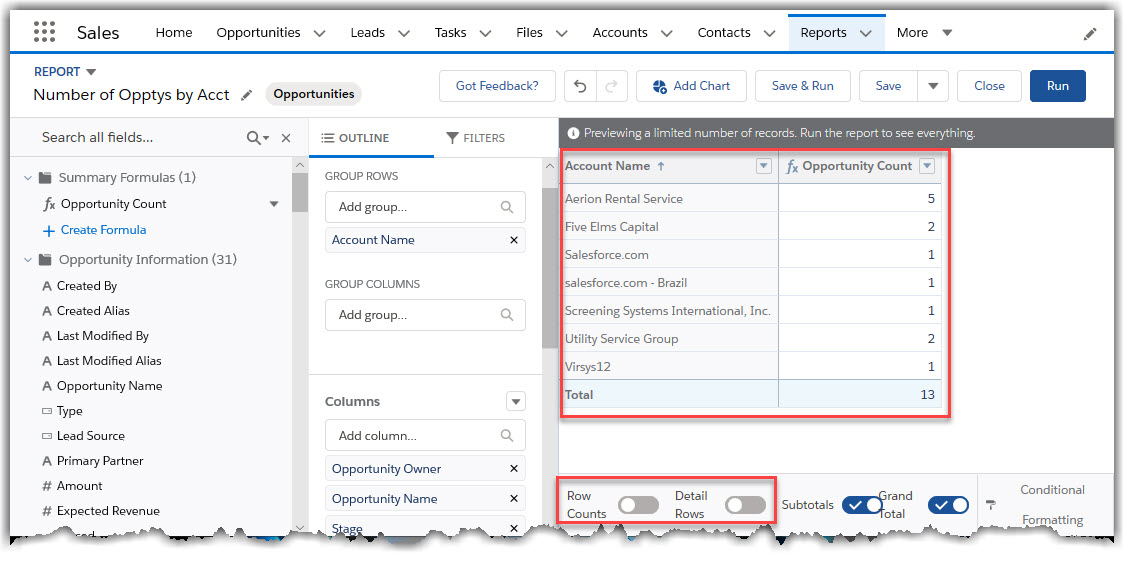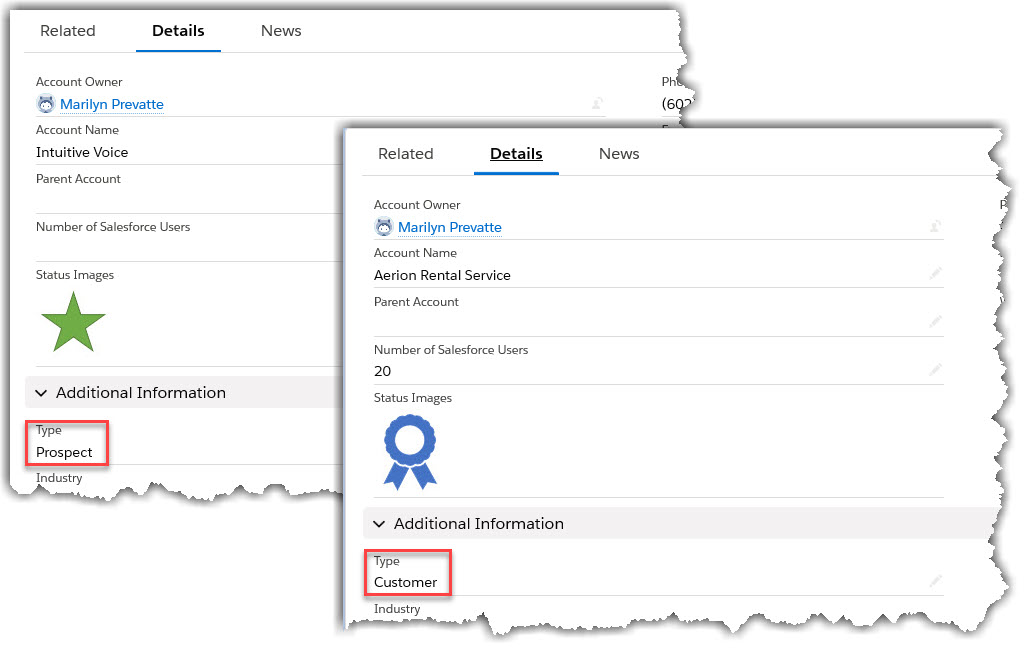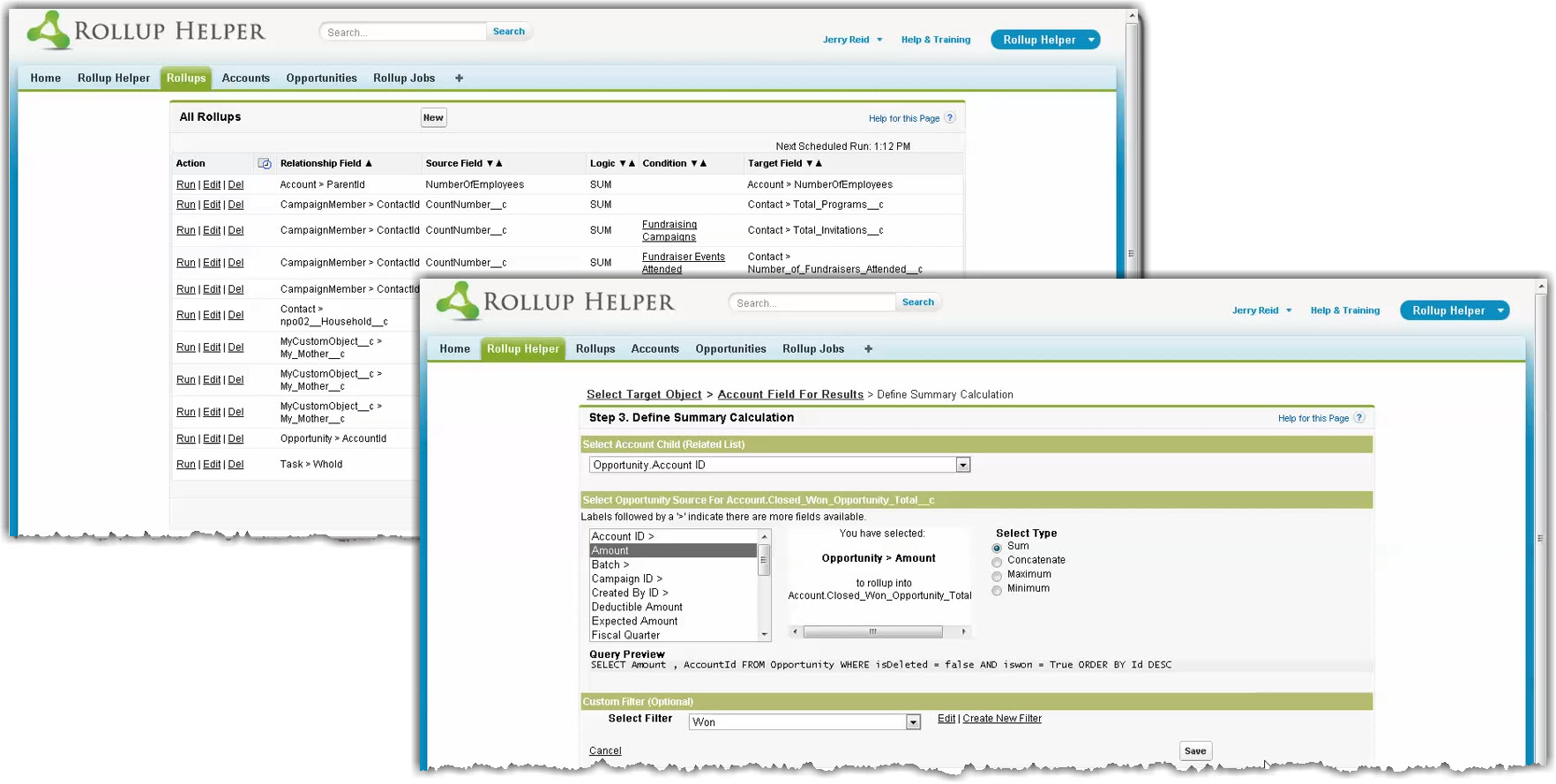In Salesforce, there is a group of tips and tricks that will help support your sales and service teams, providing you the information you need to become a better business leader. In this blog, we are going to discuss 5-different tips or tricks to help you accomplish that goal.
Power of 1
Our first tip is using the Power of 1 in a report by creating a formula Number field with a value of 1 as an object can provide you with a Unique record count.
By creating a formula Number field with a value of 1 on an object, you are then able to report on Unique record counts.
- As an example, you may want to run a report on Accounts with Opportunities or Accounts with Cases. If you added the Power of 1 field to an Account, you are able to easily report on the total number of Opportunities as well as the unique number of Accounts.
- Or for Cases, you could report on the Total Number of Cases and the Unique Number of Accounts. You will also be able to easily see what your average number of Cases/Accounts are.
Data summaries are a powerful feature of the Lightning Report Builder. With summaries, you can aggregate values, which empowers you to get more out of the numerical data in your report without even adding a filter.

Image Formulas
Our second tip is using Image Formulas. So, what are Image Formulas? The Image Formula field at the top of a record is used to alert the sales rep or service agent the importance of a Record. Several studies show, our brain recognizes and remembers content better if there are visualizations and graphics
The Image Formula field at the top of a record is used to alert the sales rep or service agent the importance of a Record. Several studies show, our brain recognizes and remembers content better if there are visualizations and graphics included.
- Examples to use this scenario if you are on Accounts to show that the Account is a Customer or Prospect. Or that the Accounts is on a Credit Hold verse has Good Credit.
- Or on a Case to know that this is a Gold or Platinum customer verse a Silver or Bronze.
- If you are creative enough with your graphics, then you will also be able to use them within List Views and Reports.

Rollup Helper
For our third tip on helping you become a better business leader is our highly recommended use of Rollup Helper by Passage Technology. Rollup Helper is a free Salesforce App that helps you roll up any information in Salesforce with clicks, not code. It’s a game-changer!
Rollup Helper is actionable, real-time data that creates more productivity for your users. It reduces your Salesforce customization efforts creating filters without writing SQL and providing you centralized data for ease of reporting.

One example we found very useful was that it could show the Last Meeting/Event Date for a Customer.
Many times, companies have difficult times managing and setting goals for Account Managers. While Account Executives can be easy to manage, Account Managers are always a little trickier as there is usually greater complexity is measuring their ability to hit targets.
As an example, you may want to make sure each of your Account Managers performs an on-site visit at each of their clients every 12-months. Or that they hold a quarterly Review Call.
By using the Rollup Helper, you can easily track the Last Onsite Meeting Date on the Account record, or the Last Review Call Meeting as well. Rollup Helper is needed in these scenarios, as Salesforce out-of-the-box only allows you to track the Last Activity date on an Account and is unable to differentiate between a Call, Email or Meeting when setting that Last Activity Date.
To get even more benefit. You can create graphics around the Last Meeting Date. If the meeting took place in the last 12-Months, display a Green graphic to indicate the Account Manager has completed the objective as needed. If a meeting is scheduled but not yet completed, then the graphic can be Yellow. If there is no meeting scheduled and its Past Due the graphic can be Red. This will allow you to run a report on all of that Account Manager’s accounts, and both the Account Manager and their direct report will be able to easily track their progress.
This creates openness and provides the Account Manager with a direct way to prove they are meeting with their clients and satisfying company goals.
This app removes pain and increases the functionality of roll-ups, even in regard to custom objects. With Rollup Helper, you can roll-up any Salesforce data: Count, sum, max, min, average, percent, lookups, text, formula, and multi-currency roll-ups.
CASESAFEID()
Our fourth tip is that anytime you need to perform data clean up, you will need to first export your records. Thus you will need to create a CASESAFEID() field for the Account, Owner, Contact, etc. These objects use multiple custom fields that could be used towards something else. The CASESAFEID() formula can be used as a workaround to replace the 15-character ID (case sensitive) with an 18-character ID (case insensitive) for export. This is just a workaround, not a fix for a duplicate ID from Salesforce, perform the data cleanup, upload that data back into Salesforce or when you will need to include a Salesforce Record ID.
The issue with using the Standard ID is as stated that it is only 15-digits long and as a result, Microsoft® Excel can only see these IDs as duplicates because Excel treats a lowercase “z” the same as a capital “Z” when looking for Unique Values. There is usually a high probability that as an admin you may want to perform a VLOOKUP off of this ID to tie it to other data, it is imperative that you utilize the CaseSafe ID.
Validation Rules
Lastly, our fifth tip is to improve the quality of your data using Validation Rules. Validation rules verify that the data a user enters a record that meets the standards you specify before the user can save the record. A Validation rule can contain a formula or expression that evaluates the data in one or more fields and returns a value of True or False. Validation Rules also include an error message to display to the user when the rule returns a value of True due to an invalid value.
You can specify the error message to display when a record fails validation and where to display it. For example, your error message can be The close date must occur after today’s date. You may select to display it near a field or at the top of the page. Like all other error messages, Validation rule errors display in red text and begin with the word Error.
When configuring Validation Rules for your organization, you may want to consider not having the Validation Rules fire for your System Admins. Many times, Admins are charged with performing data loader updates or general updates to records. By adding a criterion within the Validation rule, you can exclude a rule from firing if a Salesforce Admin is the one performing the update to the record.
In addition, it’s not a bad idea to consider whether or not new Validation rules should only impact future created records or all records, including historical. To only activate for records created on a Go Forward Basis, use criteria similar to Created Date> Set Date.
Your team can easily benefit from these Salesforce tips and tricks. If you have any questions, feel free to engage with us via the comments or reach out to us here. We’d love to hear from you.
This post was originally published here.

